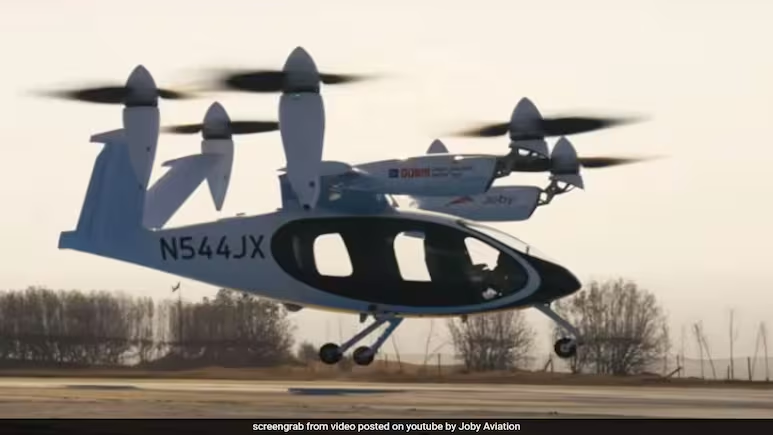Dubai’s Transition to Futuristic Air Transport: The Piloted eVTOL Aircraft Takes Flight
Dubai has marked a pivotal moment in the future of transportation with the successful piloted test flight of an all-electric vertical takeoff and landing (eVTOL) air taxi. Conducted by the Roads and Transport Authority (RTA) at a designated test site in the desert, this breakthrough highlights Dubai’s commitment to innovative urban mobility solutions. The eVTOL aircraft demonstrated its capabilities by lifting off vertically, transitioning to wing-borne flight, and landing seamlessly, showcasing the potential of aerial travel in a landscape often limited by terrestrial traffic.
The experiment took place at a uniquely designated site designed for testing these futuristic vehicles. Despite blazing temperatures soaring above 43 degrees Celsius, the air taxi functioned efficiently, with well-functioning air conditioning systems ensuring a comfortable environment for passengers and crew alike. This test flight was attended by prominent UAE leaders, including Sheikh Hamdan bin Mohammed bin Rashid Al Maktoum, the Crown Prince of Dubai, highlighting the initiative’s significance to the city’s mobility vision.
US-based Joby Aviation, the innovative minds behind the S4 air taxi, have secured a six-year agreement with Dubai’s RTA, granting them exclusive rights to operate air taxi services within the region. JoeBen Bevirt, Joby Aviation’s founder, expressed gratitude for the strong partnership with Dubai, underscoring the shared goal of pioneering air travel in the UAE. The air taxi has been meticulously designed to fulfill urban mobility needs while significantly reducing travel time, thus transforming the way residents and visitors traverse the bustling metropolis.
Key Features and Impacts of Dubai’s Air Taxi Service
The electric air taxi boasts a commendable operational range of 160 kilometers and can reach impressive speeds of up to 320 kilometers per hour, making it an attractive alternative to conventional ground transportation. For example, a typical journey from Dubai International Airport to popular destinations like Palm Jumeirah, which can take as long as 45 minutes by road, can be reduced to a swift 10-12 minutes by air taxi.
Engineered to accommodate one pilot and four passengers per flight, this all-electric vehicle stands out for its reduced noise levels when compared to helicopters, which is likely to appeal to urban dwellers. Moreover, the construction of vertiports at strategic locations around the city, including Dubai International Airport, Palm Jumeirah, Downtown Dubai, and Dubai Marina, is underway to support this innovative mode of transport.
Mattar Al Tayer, the Director General and Chairman of the Board of Executive Directors at RTA, shared insights into the initiative, explaining that the air taxi service is part of Dubai’s broader strategy to embrace advanced transportation technologies while promoting sustainability. “The aerial taxis will revolutionize mobility in Dubai, turning a 45-minute trip into a 10-minute journey with zero emissions,” he stated.
Anticipated Rollout and Future of Air Travel in Dubai
The air taxi service is projected to officially launch in the first quarter of 2026. This timeline aligns with Dubai’s aspirations to become a global leader in smart mobility solutions. The potential for air taxis to alleviate congestion on the ground is particularly vital as the population grows and urban traffic intensifies.
As per the report by Gulf News, the RTA has been diligently working on integrating air taxis into Dubai’s existing transport ecosystem, ensuring that they meet high safety and operational standards. This initiative reflects a larger global trend towards adopting air mobility solutions as cities seek efficient alternatives tailored for modern urban lifestyles.
The implications of this air taxi service extend beyond just transportation; it represents a shift in how urban spaces can be navigated. This revolutionary technology not only provides convenience and efficiency but also aims to enhance the overall quality of life for residents and visitors alike. Enhanced mobility options contribute to economic growth, as smoother transportation fosters increased tourism and business engagement.
The Global Shift Towards Urban Air Mobility
Dubai is not alone in exploring air taxis as part of its urban transportation strategies. Cities around the world are increasingly investing in similar technologies. For instance, Los Angeles, Singapore, and various European cities are also in the process of testing and implementing aerial taxi systems. This international trend indicates that urban air mobility is on the verge of becoming a standard mode of transport in many major cities, responding to the challenges of urban density and environmental concerns.
Moreover, technological advancements in electric aviation and autonomous flight systems are steadily propelling this vision closer to reality. Companies like Volocopter and Archer are also making strides in this domain and are expected to launch their services in various urban locales soon. The integration of these services may lead to a network of air taxis operating globally.
As urban air mobility continues to evolve, the future of transport could become even more interconnected between land and air, eventually leading to hybrid transport solutions that further enhance accessibility. As developers, regulators, and municipalities collaborate to create a cohesive framework for these services, the outcome could redefine urban transportation dynamics as we know it.
In a world where convenience, speed, and sustainability are pivotal, Dubai’s venture into air taxis positions it as a leader in futuristic transport solutions. The success of this initiative could pave the way for other cities to follow suit, creating a new standard for urban mobility worldwide.
For more on the future of urban transportation and innovative mobility solutions, check out our articles on Urban Mobility Innovations and Electric Transportation Trends. Additionally, for a deep dive into air mobility trends globally, explore Forbes’ coverage of air taxi trends and stay updated on technological advancements in the aviation sector by visiting Airport Technology.
DISCLAIMER
We have taken every measure to ensure that the information in this article and on our social media platforms is accurate, verified, and obtained from reliable sources. For feedback or complaints, please contact us at info@hamslive.com.


